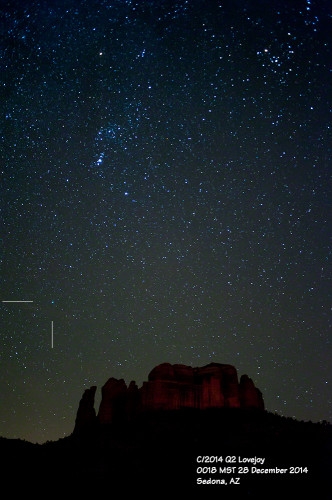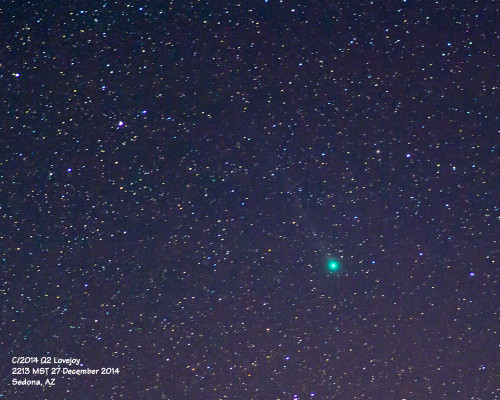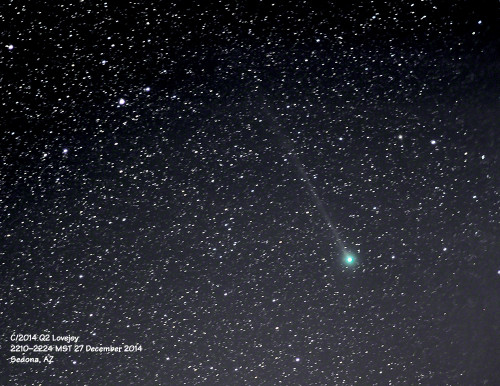Comet C/2014 Q2 Lovejoy has been climbing northward and is now well above the horizon for easy viewing in the northern Hemisphere. Sky and Telescope magazine has a good article showing where the comet is located each night in the sky through January.
With inclement weather approaching and threatening to eliminate any chances of photographing comet C/2014 Q2 Lovejoy for the next week (or more), I took advantage of one last clear, chilly night. The comet was easily visible in 7×50 binoculars and faintly visible as a naked-eye object.
The first image shows the well-known Cathedral Rock in Sedona, Arizona, with the comet visible in the lower left. Shot with a wide-angle lens, the tail is barely distinguishable in this image. In the upper center of the image stands Orion. (ISO 1600, 28mm, f/2.8, 15 seconds.)
 The second image clearly shows the tail extending up and to the left. (ISO 1600, 85mm, f/1.8, 8 seconds.)
The second image clearly shows the tail extending up and to the left. (ISO 1600, 85mm, f/1.8, 8 seconds.)
 The third image is a composite of 100 images each of 8 seconds duration and stacked with Deep Sky Stacker and shows a much longer and more detailed tail. (ISO 1600, 85mm, f/1.8 100×8 seconds.)
The third image is a composite of 100 images each of 8 seconds duration and stacked with Deep Sky Stacker and shows a much longer and more detailed tail. (ISO 1600, 85mm, f/1.8 100×8 seconds.)
 All images were taken using a fixed tripod with no tracking. I would like to try a equatorial tracking device so that I might be able to take longer exposures without the stars developing trails. Perhaps that will be my next photo equipment purchase.
All images were taken using a fixed tripod with no tracking. I would like to try a equatorial tracking device so that I might be able to take longer exposures without the stars developing trails. Perhaps that will be my next photo equipment purchase.